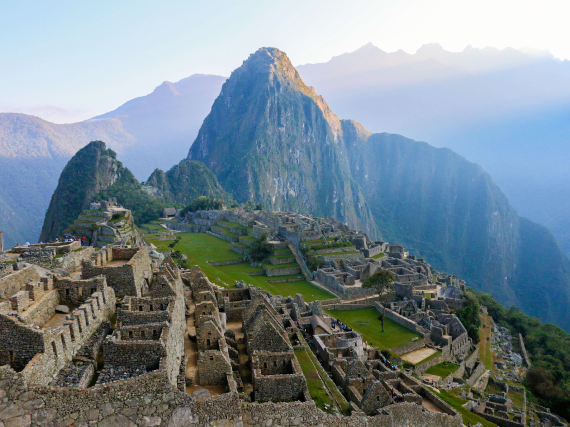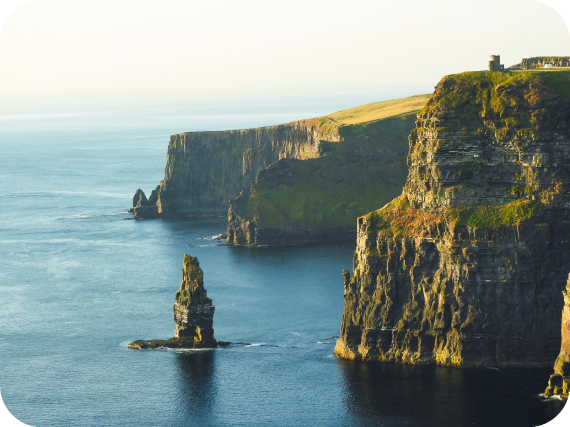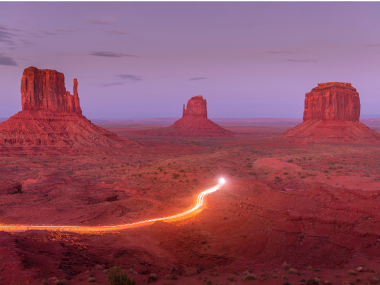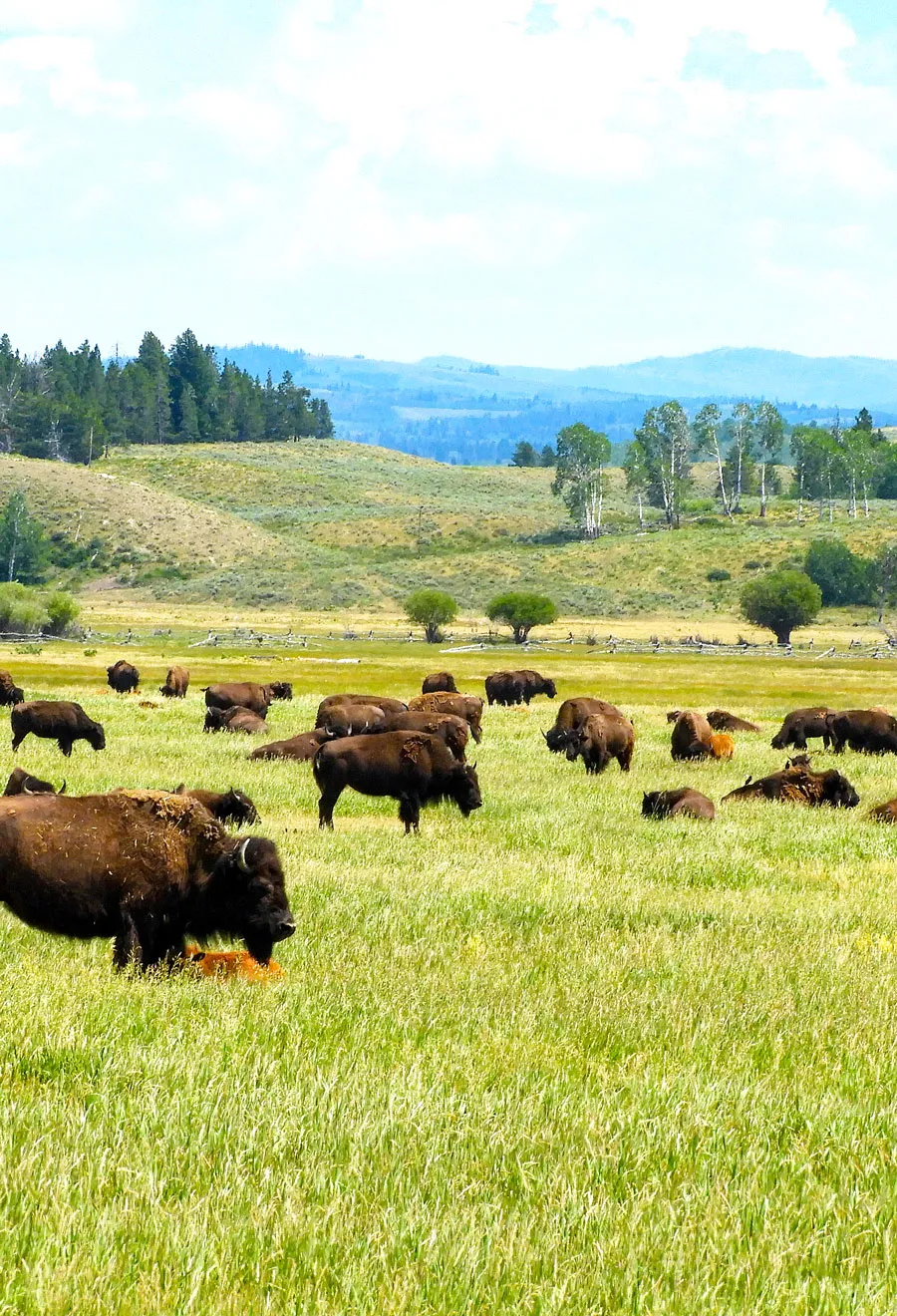From exotic seabirds off the coast to piglike creatures roaming the desert, the U.S. is home to some pretty unique animal populations. Some of these creatures, like the African oryx, were introduced to these ecosystems, while others, like the American bison, have lived here all along. Read on to learn about seven states with unusual animal populations — and how to see them for yourself.
Maine – Puffins
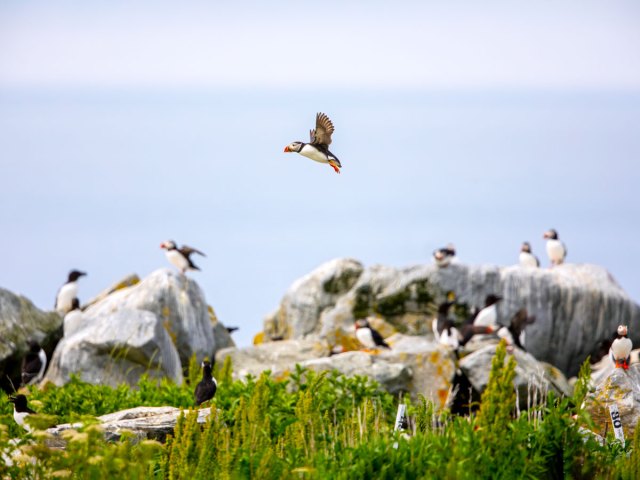
Although puffins typically reside closer to the Arctic, you don’t have to travel all the way to Iceland or Norway to see these unusual seabirds. The only place in the U.S. where Atlantic puffins reside is coastal Maine, where they gather on small, rocky islands to breed and nest. With their black and white plumage, orange beaks, and waddling gait, these unique birds somewhat resemble penguins, despite having no relation.
To view the puffins up close, excursions are available along Maine’s midcoast, with boat tours taking groups out to the various islands inhabited by the seabirds. The National Audubon Society runs tours that cruise by the puffin colony on Eastern Egg Rock, while excursions to Machias Seal Island allow visitors to disembark and view the puffins from a distance on land.
Arizona – Javelinas
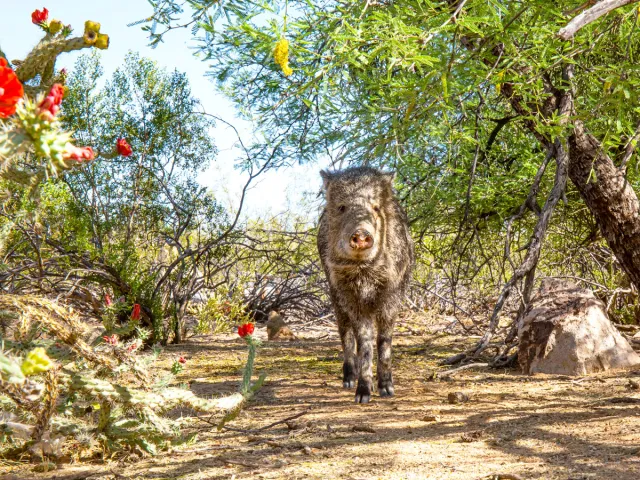
Arizona is home to a unique animal known as the javelina, a four-legged creature with hooves and a large snout. These wild animals may resemble pigs, but they are unrelated, as they are members of the peccary family. Originally brought to the U.S. by European explorers, the species can be found in North, Central, and South America.
Javelinas tend to reside in desert-type ecosystems, usually at an elevation below 5,500 feet, and herds of them can be found throughout Arizona (as well as New Mexico and Texas). They eat a variety of vegetation, including roots and flowers, favoring the succulent desert plants found throughout the Southwest. A great place to spot them in the wild is Saguaro National Park, where they are most active during the coolest parts of the day, especially in the early morning.
Florida – Manatees
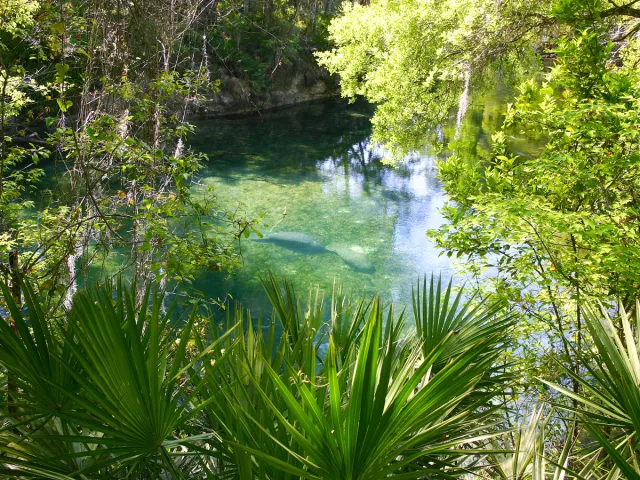
Manatees are gentle, aquatic mammals that are most closely related to elephants. They are often found in shallow bodies of water, such as slow-moving rivers, estuaries, and saltwater bays. They feed on seagrass and freshwater vegetation, and as migratory animals, they flock to Florida during the winter.
There are several spots in Florida to watch manatees in their natural habitat. During the winter, they tend to congregate in large numbers at Three Sister Springs, which offers kayak rentals and boat tours for prime viewing opportunities. Blue Spring State Park is also a good place to spot them from land, thanks to the park’s numerous boardwalks and overlooks. And the city of Tampa is home to a Manatee Viewing Center, with a large tidal walkway perfect for spotting the gentle creatures.
Montana – Bison

Though they once roamed North America in the millions, there are now only about half a million bison left in the United States. Much of this population can be found in Montana, where bison have resided for thousands of years. Weighing up to 2,000 pounds, these massive animals are known for their low-hanging heads, sharp horns, and shaggy coats.
Yellowstone National Park is one of the best places to see bison, with large herds that live on the protected land year-round. In summer, they graze on the grasslands in Lamar and Hayden valleys; in winter, they prefer the hydrothermal areas around Gardiner Basin, the Madison River, and Blacktail Deer Plateau. The Bison Range near Moiese is also home to a 19-mile driving loop, allowing ample opportunity to view bison in their natural habitat.
New Mexico – African Oryx
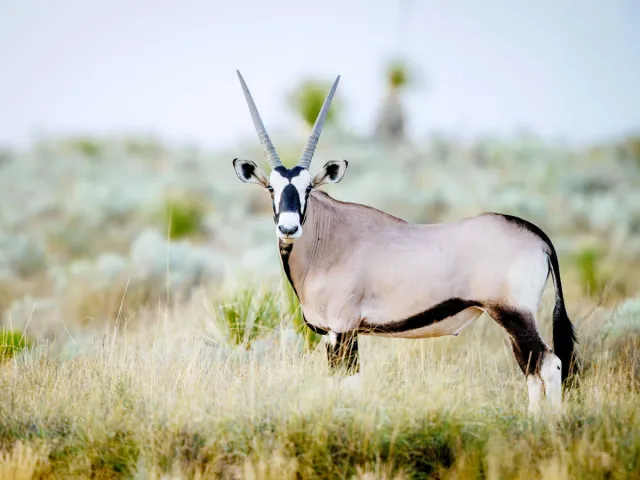
New Mexico has a population of roughly 6,000 African oryx, also known as gemsbok. This large antelope species native to the Kalahari Desert is known for its distinctive black and white face, dark underbelly, and protruding horns that reach up to 47 inches. Oryx have thrived in New Mexico since being introduced to the region in the 1970s. At the time, they were brought to the U.S. to provide hunters with more opportunities to pursue exotic big game.
After the animals were released in the White Sands Missile Range, however, it was discovered that African oryx were not a healthy addition to the region’s ecosystem. A large fence has been installed to keep the oryx out of the nearby White Sands National Park and ensure the park’s native species aren’t affected. Still, oryx can often be spotted near the Missile Range or Vevillete National Wildlife Refuge.
New York – Seneca White Deer
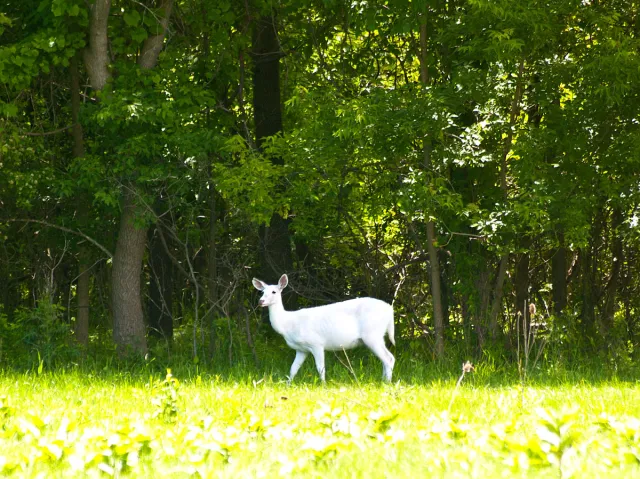
The Finger Lakes region in upstate New York is home to a unique white-tailed deer called the Seneca white deer. They are not a different species than their fawn-colored brethren, nor are they albino — instead, the deer carry a recessive genetic trait known as leucism that causes white fur. They began to flourish in the region during the 1940s after the U.S. Army enclosed the former Seneca Army Depot, inadvertently protecting the white deer from predators.
After decades of passing on the recessive trait with every generation, they’ve now grown to a population of around 300. The herd lives peacefully on the site of the former army depot, which has since been christened Deer Haven Park. To see this unofficial local mascot in person, self-guided auto tours and bus tours are available through the park.
Hawaii – Green Sea Turtles

Known as honu to Native Hawaiians, the green sea turtle is considered a sacred animal in Hawaii. A symbol for wisdom and good luck, these special creatures have been endangered since the 1970s, although numbers have recently increased due to conservation efforts. Roughly 96% of the turtles’ nests can be found within the French Frigate Shoals, the largest atoll in the Northwestern Hawaiian Islands, with turtles migrating between feeding grounds and nesting beaches.
There are quite a few spots around Hawaii where you can spot these large turtles, which have a lifespan of up to 80 years. On Oahu’s North Shore, the aptly named Turtle Beach is known for frequent sightings of turtles on land. They can also be spotted on Punaluʻu Beach on the Big Island, although snorkeling tours give you a better chance of seeing them in the water. Planning a trip between May and September will increase your chances of spotting one in the wild.
More from our network
Daily Passport is part of Inbox Studio, which publishes content that uplifts, informs, and inspires.

